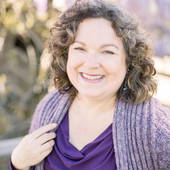WHERE THERE IS SMOKE MAKE SURE THERE IS NO FIRE!
It's hard to believe how many people take their alarms out of service after a false alarm, which granted is an annoyance. I see this all the time when showing homes to buyers, or attending home inspections. Please don't leave yourselves and your loved ones exposed to such a costly, hazardous and potentially deadly risk as a house fire. An early warning system is only a handfull of dollars, and as this article points out, newer machines have a button to reset after a false alarm. Reposted with permission from Rhonda Sanderson , from Pillar to Post Inspections.
Smoke alarms are an important defense against injury or death in house fires. Statistics from the National Fire Protection Association show that nearly two-thirds of home fire fatalities occur in homes with non-working or missing smoke detectors. Most building codes now require smoke detectors in all residential structures, which has resulted in a steep drop in fire- and smoke-related deaths. Homeowners should check with their local public safety office or fire department for specific information on these requirements. We asked Roberto Sarjoo, Marketing Manager for Pillar To Post, for his tips on smoke alarms.
- As in real estate, location is key! Smoke alarms should be installed in every bedroom, outside every sleeping area, and on each level of the home.
- Alarms should be placed high on a wall or on the ceiling. It’s best to follow the manufacturer’s instructions for placement. High, peaked ceilings have dead air space at the top; in these cases smoke alarms should be placed no closer than 3 feet from the highest point.
- For areas close to the kitchen, use a detector with a “hush button” that can be used to silence nuisance alarms triggered by cooking smoke or steam. No matter which type is used, never remove the unit’s battery to stop or prevent nuisance alarms.
- There are two primary types of smoke alarm technology: ionization and photoelectric. According to the National Fire Protection Association, ionization alarms are more responsive to flames, while photoelectric alarms are more sensitive to smoldering fires. For the most comprehensive protection, both types or a combination unit should be installed.
- Test each alarm monthly. It’s helpful to put a reminder in the calendar to do this on the first or last day of the month, for example. The units have a test button that will sound the alarm for a moment or two when pressed. Any alarm that fails to sound should have the battery replaced. If the test button fails with a new battery, replace the entire detector immediately.
- Replace the batteries at least once a year. A common rule of thumb is to do this when changing to or from Daylight Saving Time in fall or spring. Remember, a non-working alarm is no better than no alarm at all. Some alarms now come with 10-year lithium batteries that eliminate the need for new batteries, but the unit itself must be replaced after its stated lifespan.
- If the alarms are hard-wired to the home’s electrical system, make sure they are interconnected for maximum effectiveness – meaning that if one alarm is triggered the others will sound as well. Any hard-wired alarms, interconnected or not, should be installed by a licensed electrician for safety and proper operation.
- The newest interconnected alarms are wireless. This technology allows detectors to communicate with one another and, like their hard-wired cousins, will sound all units at the same time even if just one is triggered initially.



Comments(5)